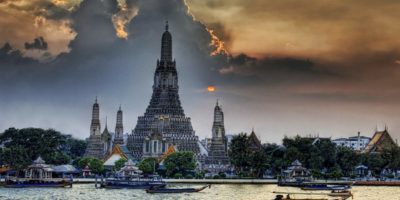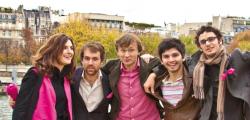
Iceland.Photo by Alex Talmon on Unsplash
Top 10 Facts about The Northern Light Center, Iceland
Founded in 2013 by a group of true Northern Lights enthusiasts, Aurora Reykjavik is the first and only Northern Lights Center in Iceland. The Northern Lights is also known as The Aurora Borealis. It is a natural phenomenon created when solar wind particles interact with the Earth’s magnetic field.
The best place to see the northern lights in Iceland is the Jokulsarlon glacier lagoon, which lies by the Vatnajokull glacier. The center is first and foremost designed to guide people who are chasing the northern lights, regardless of whether they are traveling on their own or in a guided group.
This excites the particles that release energy, causing peculiar luminous green and purple streaks across the skies. This happens between September and April.
1. They’re caused by the solar wind
The northern lights are a naturally occurring phenomenon that happens when the solar wind comes into contact with the earth’s magnetic field.
The solar wind is a vast stream of electrically charged plasma that has been ejected from the surface of the sun and escaped its gravity, traveling at five million mph and taking 18 hours to reach Earth.
The Northern Lights appear in Iceland due to its geographical proximity to the magnetic poles of the Northern hemisphere. With the combination of the long dark nights and remote nature, which provides a lack of light pollution, Iceland is one of the best choices for seeing this naturally occurring phenomenon.
2. You might find them in cave paintings
The earliest depiction of the northern lights could be in the Cro-Magnon cave paintings dating to around 30,000 BC and they decorate the Unesco world heritage Caves of Cantabria in northern Spain.
3. Atoms and particles mix the colors
When charged particles enter the Earth’s upper atmosphere, they come into contact with the gases there, particularly oxygen, hydrogen, and nitrogen.
As they strike the atoms of these gaseous elements they excite them. Afterward, as they calm down they release light. Electrically charged particles that have been carried from the sun are funneled towards the magnetic poles where they collide with the elements in the upper atmosphere: oxygen, hydrogen, and nitrogen.
It is this collision that releases the light energy that creates the aurora. The most spectacular light shows are caused by powerful solar winds created by a solar storm, a mass ejection of plasma via solar flares.
The green color of the aurora comes from charged particles colliding with oxygen atoms, the red from both oxygen and nitrogen, and the purple pinks and blues from nitrogen.
4. You can see them from space
Astronauts on the International Space Station will sometimes pass through the aurora borealis while in orbit. While most displays of the northern lights appear between 55 and 80 miles above the Earth’s surface.
They can reach up to 370 miles into space. It is hosted by The International Space Station and orbits at an altitude of 253 miles.
Unfortunately, you won’t catch a glimpse of the Northern Lights during the summer months. Even though the aurora remains active throughout the year, there are not enough dark hours in Iceland to make them visible during these months.
5. They’re caused by ‘fox fires’
The Finnish word for the northern lights is revontulet, which can be translated as “fox fires”. This comes from ancient folklore. They believed that the aurora was caused by a fox sweeping its tail, sending snow up into the sky.
6. They don’t look anything like they do in photos
The northern lights in real life usually appear very different from the colorful photos we see of them. That’s because the human eye is not good at detecting color at night.
As a rule, you’ll see shades of grey and, if you’re lucky, some green too, as green is the color most easily identified by the eye. This is why it’s so important to take a good camera on a northern lights trip.
They’re much more sensitive than the human eye and, using long exposures, can capture colors and details that you won’t see. In terms of photos and what we see in real life, green is the main color we associate with the northern lights.
7. High solar activity means spectacular displays
Times of high solar sunspot activity leads to more breathtaking visual displays of the northern lights. The solar cycle, which lasts on average for about 11 years, has been observed for centuries.
The most recent solar maximum resulting in higher solar activity and therefore particularly spectacular displays of the northern lights were in 2014.
8. They can be disruptive
The solar flare that created the solar storm of 1859 was of such magnitude that the northern lights were visible as far south as Mexico, Cuba, and Hawaii. The effects were that telegraph systems all over Europe and North America failed. Telegraph operators also reported receiving electric shocks.
A similar storm hitting Earth today could potentially cause mass disruption to global communication systems. The solar storm of 2012 was thought to be of a comparable magnitude but the solar wind from it missed the Earth.
9. They’re a sign of good luck
Fishing communities in Scandinavia once believed that the northern lights were caused by light reflecting off a large herring shoal in the ocean. They called it sillblixt — or “herring flash” — and saw it as an omen of a good haul.
10. They wouldn’t exist without both poles
The magnetic field is an invisible shield around the Earth created by magnetic forces flowing from the South Pole to the North Pole; it protects the planet from the solar wind by stopping it from striking directly.
The field diverts the solar wind, but as the wind’s magnetic field meets the magnetic field on the dark side of the Earth, the fields merge and some of the charged particles are funneled back towards the poles where they meet the upper atmosphere.
This funneling happens towards both North and South Poles, creating both the northern lights and the southern lights.
Planning a trip to Paris ? Get ready !
These are Amazon’s best-selling travel products that you may need for coming to Paris.
Bookstore
- The best travel book : Rick Steves – Paris 2023 – Learn more here
- Fodor’s Paris 2024 – Learn more here
Travel Gear
- Venture Pal Lightweight Backpack – Learn more here
- Samsonite Winfield 2 28″ Luggage – Learn more here
- Swig Savvy’s Stainless Steel Insulated Water Bottle – Learn more here
Check Amazon’s best-seller list for the most popular travel accessories. We sometimes read this list just to find out what new travel products people are buying.













